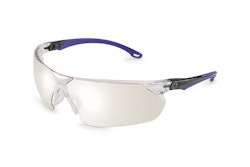
In choosing between steel-toe and composite toe work boots, the best choice depends on several factors in the work environment.
An OSHA document on PPE notes that workers facing possible foot or leg injuries from falling or rolling objects or penetrating materials should wear protective footwear.
Toe Protection and Jobsites
Workers should wear foot and/or leg protection when heavy objects such as barrels or tools might roll onto or fall on the employee’s feet or sharp objects such as nails or spikes could pierce the soles or uppers of ordinary shoes. Footwear PPE also is indicated for those whose work involves exposure to hot substances or corrosive or poisonous materials.
If an employee’s feet may be exposed to electrical hazards, non-conductive footwear should be worn, OSHA notes, adding on the other hand, workplace exposure to static electricity may necessitate the use of conductive footwear.
The employer must ensure that protective footwear complies with any of the following consensus standards:
ASTM F-2412-2005, ‘"Standard Test Methods for Foot Protection,’ and ASTM F-2413-2005, ‘Standard Specification for Performance Requirements for Protective Footwear; ANSI Z41-1999, ‘American National Standard for Personal Protection – Protective Footwear,’ or ANSI Z41-1991, ‘American National Standard for Personal Protection – Protective Footwear’.
OSHA notes that all ANSI-approved footwear has a protective toe and offers impact and compression protection, although the type and amount is not always the same. Safety shoes have impact-resistant toes and heat-resistant soles protecting the feet against hot work surfaces common in roofing, paving and hot metal industries. The metal insoles of some safety shoes protect against puncture wounds.
Safety shoes also may also be designed to be electrically conductive to prevent the buildup of static electricity in areas with the potential for explosive atmospheres. OSHA notes foot powder should not be used in conjunction with protective conductive footwear because it provides insulation, reducing the conductive ability of the shoes. Silk, wool and nylon socks can produce static electricity and should not be worn with conductive footwear.
Conductive shoes must be removed when the task requiring their use is completed. OSHA cautions employees exposed to electrical hazards must never wear conductive shoes. Electrical hazard, safety-toe shoes are nonconductive and will prevent the wearers’ feet from completing an electrical circuit to the ground.
These shoes can protect against open circuits of up to 600 volts in dry conditions and should be used in conjunction with other insulating equipment and additional precautions to reduce the risk of an employee becoming a path for hazardous electrical energy.
The insulating protection of electrical hazard, safety-toe shoes may be compromised if the shoes become wet, the soles are worn through, metal particles become embedded in the sole or heel, or employees touch conductive, grounded items.
Types of Toe Protection
Steel-toe boots have toe caps made of steel to provide optimal protection against heavy impacts and compression, such as falling or crushing objects and puncture hazards. They are typically heavier than composite toe boots due to the density of the steel and can be less comfortable due to weight and heat transfer.
Steel toe boots conduct electricity, posing a risk near electrical hazards. Composite toe boots have toe caps made of non-metallic materials such as fiberglass, Kevlar, carbon fiber, or plastic composite blends.
These lightweight materials do not conduct heat or cold like steel, providing better insulation and comfort in extreme temperatures as well as in extended wear on jobs where workers move quickly or cover long distances in their shifts.
While these work boots provide adequate protection against compression and impact and can meet regulatory safety standards, they may not be as resistant to extreme forces such as steel toes. Their non-metallic properties are favored in workplaces where metal detectors are used and will not trigger alarms as would steel-toe shoes. As they are non-conductive, they are safer around electricity.
OSHA recommends checking a product’s labeling or consult the manufacturer to ensure the footwear will protect the user from the hazards a worker faces.
Inspect PPE footwear prior to each us for wear and tear, including cracks or holes, separation of materials, broken buckles, or laces. Check the soles for pieces of metal or other embedded items that could present electrical or tripping hazards. Follow manufacturers’ recommendations for cleaning and maintenance of protective footwear.
















